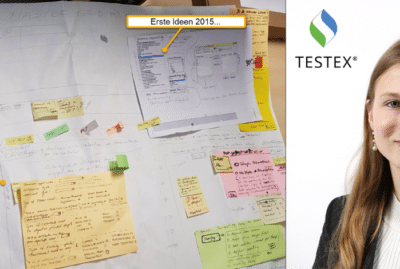Code Smell refers to certain patterns or signs in a code base that may indicate that the code is poorly structured or potentially buggy. They are not outright errors, but indications of potential problems that may require code rework or refactoring to improve readability, maintainability, and efficiency. Code smells can include redundant code, long methods or classes, excessive comments, or poor naming of variables.
Code Smell: Excuse me, but...

Why smell?
In this context, “smell” is of course meant in a figurative sense. The term “code smell” refers to functioning but often unclean or poorly structured code that may be error-prone, difficult to understand or difficult to maintain.
If the structure of a source code is difficult to understand, simple errors can creep in during further development. There are various bad practices that can make the code “smelly”:
- Duplicates
- Long and confusing methods
- Code styles that are thrown together
- Poor or missing documentation
- Parameter lists that are too extensive
- Temporary fields
The aim of re-factoring is to eliminate such code smells as efficiently as possible. This automatically improves the value of an application. Well-structured code and good documentation make the application usable and durable in the long term.
Signs that your code "stinks"
Efficient code maintenance is crucial for successful software development, as unclear code can lead to longer development cycles and higher costs. Problems with bug fixing and the introduction of new functions as well as communication problems within the team can occur. Careful code maintenance is therefore essential to minimise these challenges and ensure project success. If you have noticed these signs, then it is time for a comprehensive analysis.
Difficulties with maintenance: Customers may have difficulties maintaining their software if the code is unclear, poorly structured or riddled with code smells. This could lead to longer development cycles and higher maintenance costs.
Time spent fixing bugs: Code smells can lead to error-prone code, which in turn leads to increased time spent fixing bugs. Customers want their software to be reliable and stable.
Difficulties when introducing new functions: Customers who want to add new features or extend existing ones may encounter difficulties if the code is not well structured. This can increase development time and delay the introduction of new features.
High costs for future development: Customers may be concerned about the long-term cost of development if the code is not well maintained and constant refactoring is required.
Communication problems within the team: If the code is not consistent and different parts of the software are structured differently, communication problems can occur within the development team.
The solution: re-factoring
If code smells are present in the code, this indicates that the code has potential for improvement. Re-factoring is the practical implementation to eliminate these problems. During the refactoring process, code smells are identified and eliminated by restructuring, simplifying and better organising the code.
Depending on the company’s situation, budget and the current status of your business software, it must be decided individually whether re-engineering or re-factoring makes more sense.
Re-factoring improves the internal code quality without changing the external behaviour. It involves restructuring the code to make it more readable, easier to maintain and more efficient without modifying the basic functionality. This process is often done incrementally, making minor adjustments to optimise the code.
Our KUBE-X development platform provides a stable and innovative basis for responding quickly and effectively to the requirements of your software while always keeping security in mind. Thanks to the Slice & Dice process, KUBE-X can now also be used to modernise existing applications in just 4 steps, without BIG BANG!
Contact
Do you have any questions? Would you like to find out more about our services?
We look forward to your enquiry.
Contact us






































































